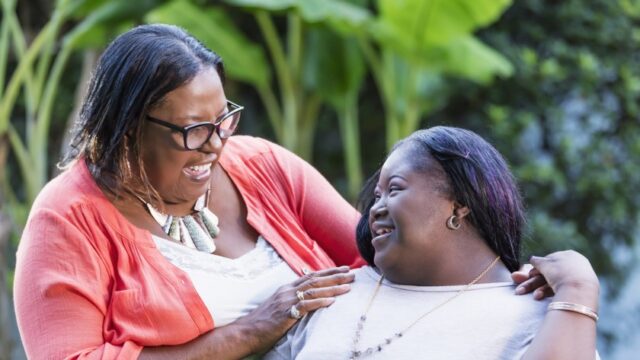Resource Library
Reaching and Serving the Array of Kinship/
Download This Resource
Tip Sheet
Reaching and Serving the Array of Kinship/Grandfamilies in Your Community
Download This Resource

A Network Monthly Resource: October 2024
Many nonprofits and government agencies seek to reach and serve more kinship/grandfamilies throughout their communities. This tip sheet lists some key strategies for doing that.
- Hire staff members who reflect the community and partner with an array of community leaders. Having staff members who share your families’ culture and/or background is important. Staff and partners with strong community ties will help you reach more kinship/ grandfamilies, earn their trust, and serve them appropriately.
- Serve all kinship/grandfamilies in your community. Ensure your services are as accessible and inclusive as they can be. As possible, do not create unnecessary eligibility requirements, such as limiting services to kin caring for children in foster care.
- Collect, disaggregate, and analyze data to identify inequities and gaps. Work to address inequities and close gaps through advocacy and/or internal changes to policies, practices, and/or programs.
Common Factors to Consider
- Age
- Child welfare involvement
- Country of origin/citizenship
- Disability
- Ethnicity
- Gender and gender identity
- Language
- Lived experience in kinship/grandfamilies
- Race
- Religion
- Sexual orientation
- Socioeconomic status
- Tribal affiliation
- Ask current, potential, and previous kinship/grandfamilies what barriers keep them from participating in group and/or individual meetings. Try to remove these obstacles. Common barriers to attendance include, but are not limited to, work obligations during meeting times, a lack of familiarity with or access to meeting technology, the location (due to commuting time, the cost of gas, and/or the availability of public transit), a lack of child care, and the venue (e.g., government buildings, including schools, can be stressful and traumatic places for many people; other buildings may not be accessible for individuals with disabilities).
- Make room for everyone to speak, those who are quiet as well as those who are eager to contribute, by creating opportunities—both formal and informal—to seek feedback and tailor your services to the needs of the families you partner with. Create a community council, and include caregiver voices as an integral part of every programming discussion and decision. Establish clear guidelines on how members of a group will interact and resolve disagreements so that everyone feels comfortable. Conduct an annual survey to assess your effectiveness; be transparent about the results and how they will be used.
- Match your program communications with kinship/grandfamilies’ preferences. Do families prefer printed resources or content delivered to them electronically? Ask your community council to provide input and review your resources. Consider presenting and sharing materials in multiple ways to reach more kinship/grandfamilies. Develop Plain Language resources, translated into the languages of the communities you serve. Avoid acronyms and jargon specific to your profession. (Even “grandfamilies” and “kin caregivers” are unfamiliar terms for many.) Be sure photos and illustrations represent the families you work with.
- Recognize your own biases. We all have them. An easy rapport with those who share our regionalisms, political party, or favorite sports team. A skepticism about those who are “different” from us in some way. It is especially important to be alert to biases toward families who are struggling, and any inclination to blame rather than accept or empathize. Notice when you are having a strong reaction to a family or situation. Consider the source of your response. Ask yourself what choices were available to you in the moment to build a stronger relationship with the individual(s) involved. To explore the notion of unconscious bias (holding a bias that one is not aware of), consider taking one of the many online assessments available. It can be helpful to discuss and address bias as a team and in support groups. Be curious, acknowledge mistakes, and be open to learning new ways of thinking about the world.


